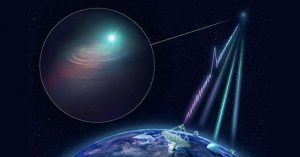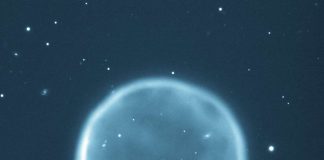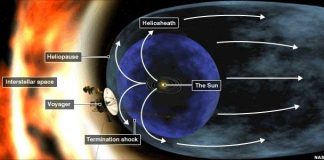FEBRUARY 11, 2021

W. M. Keck Observatory Chief Scientist John O’Meara (left) and Professor J. Xavier Prochaska of UC Santa Cruz (right) are among the authors awarded the 2020 AAAS Newcomb Cleveland Prize. (Image: W. M. Keck Observatory)
Two scientists at the W. M. Keck Observatory have received the 2020 Newcomb Cleveland Prize that is annually awarded to authors of outstanding scientific papers published in the journal Science.
The duo was awarded the honor for successfully zeroing in on the precise location of a non-repeating fast radio burst.
The winners were announced by the American Association for the Advancement of Science (AAAS) on Tuesday at its 187th AAAS Annual Meeting. Chief scientist John O’Meara and University of California Santa Cruz professor J. Xavier Prochaska won the award among others.
The duo, along with their team, authored a study that was published in the journal Science and located the home galaxy of a non-repeating Fast radio burst (FRB). FRBs are flashes of radio emission from distant astronomical sources, localising which can help determine their causes and allow them to be used as cosmological probes.
In their research, the team found that the said repeating FRB 180924 came from a medium-sized galaxy at a cosmological distance. The scientists used a dedicated observing mode on a radio interferometer, in addition to observations from an optical telescope, for the detection and localization of the FRB.
Stating it to be an honor to be selected for the Prize, O’Meara said “Given the robust research AAAS publishes across a variety of scientific fields, it’s a great honor to have this work selected for the Newcomb Cleveland Prize. There was a global team of astronomers involved in this work, and it’s wonderful to see such a large collaboration earn this distinction for an exciting science result,” as quoted in a report.
The key data for the study was obtained using Keck Observatory on Maunakea in Hawaiʻi. For those unaware, Keck Observatory boasts of the world’s largest optical and infrared telescopes.

Artist’s impression of CSIRO’s Australian Square Kilometre Array Pathfinder (ASKAP) radio telescope finding a fast radio burst and determining its precise location. (Image: CSIRO/ANDREW HOWELLS)
Lauding the infrastructure, J. Xavier Prochaska said, “Keck’s world-leading instrument and the nimbleness of its Target of Opportunity program let us measure the galaxy’s distance within hours after the fast radio burst was localized.”
The research by the scientists solved a mystery surrounding the FRBs since they were first discovered in 2007. Using their deductions, astronomers can now further probe and characterize its host galaxy to investigate what might have generated the intensely energetic FRB.

































































































